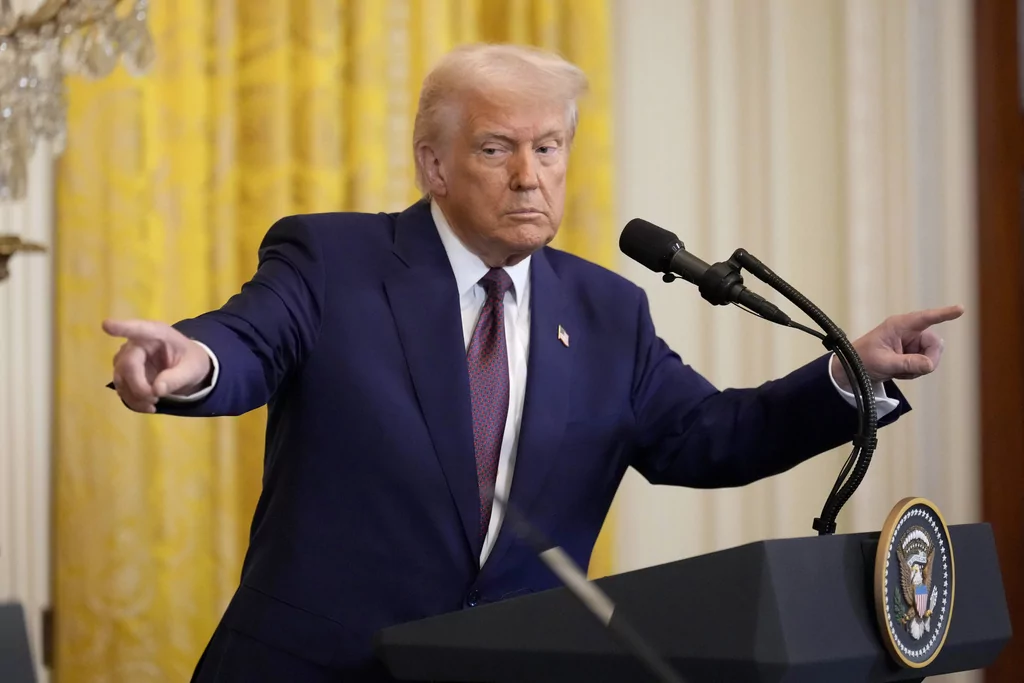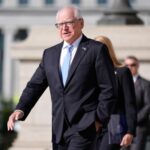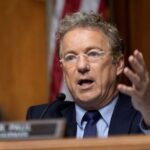

President Donald Trump has upended worlds of business and foreign relations with a series of tariff announcements during his first month in office, promising big moves that will reset trade negotiations on the world stage.
“Whatever countries charge the United States of America, we will charge them,” Trump declared during the Oval Office signing ceremony for his latest executive order, this one previewing reciprocal tariffs on a range of foreign nations. “We’re going to make America rich again.”
Trump was similarly blunt during a press conference with Indian Prime Minister Narendra Modi later that same day, declaring that “whatever India charges, we charge them.”
“So frankly, it no longer matters to us that much what they charge,” he added, with typical Trumpian bravado.
But a look under the hood of Trump’s trade push reveals that, so far, the impact of his tariffs has not quite matched the buzz.
Just days after taking office, Trump announced tariffs on Colombia when that country’s president, Gustavo Petro, refused to accept repatriation flights of illegal immigrants. Petro backed down in the face of the threat, the tariffs were not imposed, and Trump scored an early victory.
Trump announced 25% tariffs on Mexico and Canada and a 10% tariff on China even before taking office, saying it was because those countries had not done enough to stop illegal immigration or the trafficking of fentanyl into the United States. That led to meetings with the leaders of Mexico and Canada to try and work out a deal.
Trump said on Jan. 31 that he was moving forward with the Mexico and Canada tariffs, but those were ultimately avoided when both countries offered concessions on border security, and have been pushed back until at least March 1.
The 10% tariffs on China went into effect on Feb. 4, leading China to retaliate with new tariffs of its own hours later. But Trump reversed a portion of those tariffs as well three days later, leaving intact an exemption for imported products valued at under $800 known as the “de minimis” exemption, though it’s expected that will be reinstated when the administration can get the logistics worked out.
“The White House is looking for political wins as well as economic winds,” said Jared Pincin, an economics professor at Cedarville University in Ohio, explaining Trump’s tactics. “They’re also being a little more careful than they were in 2018, the last time we went through this.”
Last week, Trump signed an executive order on reciprocal tariffs, promising that the U.S. would match the import duties of major trading partners like Europe, Canada, and India. However, the order is only the first step in the process.
The order directs the president’s team to examine and investigate nonreciprocal trade relationships. Trump’s top economic advisers, including Commerce Secretary Howard Lutnick, U.S. Trade Representative Jamieson Greer, Treasury Secretary Scott Bessent, National Economic Council Director Kevin Hassett, and White House senior counselor for trade and manufacturing Peter Navarro, will then make recommendations to the president in the coming weeks and months.
In layman’s terms, any new tariffs will be announced “in Trump time,” as characterized by White House officials. But Trump time will be no earlier than April 2, officials said when laying out the time frame.
Those details led to some criticism in some corners that Trump was retreating from his big tariff plans.
“Markets had to decide whether the president was being a protectionist or a pushover, and for now are erring toward pushover,” UBS Global Wealth Management economist Paul Donovan wrote in an investor note on Friday. “The delay is seen as an opportunity to do ‘deals.’”
Such deals are already being discussed. The European Union is reportedly in talks to lower its import duties on American cars from 10% to 2.5% — to match the U.S. import tax on European cars. India, a famously protectionist country, is slashing tariffs on American bourbon, though only from 150% to 100%.
Paul Sracic, an Ohio-based adjunct fellow at the Hudson Institute, said there is more than one way for a tariff announcement to be useful.
“I think a lot of this is part of negotiations,” he said. “Your first bid in the negotiation is the extreme bid, and that gives you a chance to work back from it.”
Reciprocal tariffs can be especially tricky to negotiate because they are different for every country depending on how each one taxes various items. The Trump administration has also targeted what they call nontariff barriers, such as the value-added tax used by the European Union and other trading partners. Since the U.S. does not have a value-added tax, a calculation would need to be made to determine how to reciprocate.
Sracic predicted that a lot of the reciprocal tariffs may ultimately be walked back, though he added that doesn’t mean the effort won’t be effective.
“When people start to realize the kinds of tariffs that some other countries have on particular goods, it’s going to make what Trump does more popular,” Sracic said. “There’s a lot of hypocrisy out there from other countries when they accuse the U.S. of being protectionist.”
White House aides confirmed Thursday that they expect foreign nations to negotiate down Trump’s reciprocal taxes by lowering their import fees on U.S. goods. The White House did not say if Trump would consider dropping tariffs in exchange for non-trade-related concessions.
Regarding the charge that Trump was being a pushover, a White House official pointed to Trump’s 25% steel and aluminum import tax, which will be implemented on March 12, as evidence of his seriousness on the matter, and to the border concessions already laid out by Canada and Mexico.
CLICK HERE TO READ MORE FROM THE WASHINGTON EXAMINER
Trump has been back in office for less than a month and is expected to implement more tariffs and potentially negotiate trade deals as he settles back into office.
“We’ll see what happens after April 1,” Sracic said. “I don’t think they’ll all go into effect, but I do think you’ll start seeing more. We’re just getting started, and you certainly can’t accuse this administration of not being active.”






